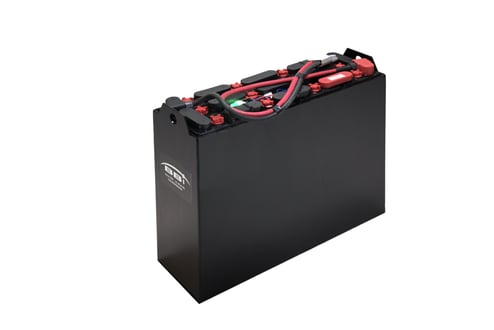Forklift Batteries Discharge Rates Explained
Understanding the discharge rates of forklift batteries is essential for anyone working with industrial equipment. When it comes to maximizing efficiency and ensuring safety, knowing how these batteries function can make all the difference. This article will provide a comprehensive overview of forklift battery discharge rates, factors affecting them, and practical implications for operators and businesses alike.
Forklift Batteries Discharge Rates Explained
Forklift batteries are typically lead-acid or lithium-ion types, each with its own characteristics regarding discharge rates. Discharge rate refers to how quickly a battery releases its stored energy when it's in use. It’s a crucial aspect because it directly impacts the performance of your forklift, including how long it can operate before needing a recharge.
The Basics of Battery Discharge Rates
When you think about forklift batteries, consider them as power sources that convert stored chemical energy into electrical energy. The discharge rate indicates how fast this energy is released and is usually measured in "C" ratings (capacity). For instance:
- 1C means that the battery will discharge its entire capacity in one hour.
- 2C means it will do so in half an hour.
This information is vital for understanding how long a forklift can run on a single charge. A higher discharge rate may enable faster operation but can significantly decrease the overall runtime before the next charging session is required.
Factors Influencing Forklift Battery Discharge Rates
Several factors can affect the discharge rates of forklift batteries:
Different types of batteries have unique characteristics:
- Lead-Acid Batteries: Generally have lower discharge rates but are more affordable.
- Lithium-Ion Batteries: These often allow for higher discharge rates and quicker recharging times but come with a higher upfront cost.
Extreme temperatures can impact battery performance:
- In colder conditions, lead-acid batteries may lose efficiency, while lithium-ion batteries tend to maintain better performance.
- High temperatures can also accelerate wear and tear on either type, leading to reduced lifespan.
Heavier loads require more power, which increases the discharge rate:
- If you're lifting heavy materials consistently, be prepared for a shorter operational time between charges.
Continuous versus intermittent use affects how quickly batteries discharge.
- Continuous heavy usage leads to faster depletion compared to sporadic light-duty tasks.
Proper charging techniques directly influence discharge rates:
- Overcharging or undercharging can shorten battery life and impact performance.
Understanding Amp-Hours (Ah) and Its Impact on Discharge Rates
One way to measure a forklift battery's capacity is through amp-hours (Ah). This unit essentially tells you how much current (in amps) a battery can deliver over time (in hours). The relationship is straightforward:
- A 100 Ah battery could theoretically provide 100 amps for 1 hour or 50 amps for 2 hours, etc.
Now let’s dive deeper into why this matters concerning discharge rates:
Calculating Runtime Based on Load
To calculate how long your forklift will run based on load weight and amp-hour rating, you might apply the following formula:
[ \textRuntime (hours) = \frac\textAmp-Hour Rating\textLoad Current (amps) ]
For example:
- If you have a 200 Ah battery and your load requires 40 amps,
[ \textRuntime = \frac20040 = 5 \text hours ]
This calculation helps operators plan their shifts efficiently!
Practical Examples of Discharge Rate Implications
Consider two different scenarios involving two types of forklifts:
- A lithium-ion forklift operating at high intensity might consume about 80 amps while lifting heavy pallets.
- A traditional lead-acid model doing similar work might only manage about 60 amps due to its limitations.
In this case, if both forklifts started with fully charged batteries rated at 200 Ah:
- The lithium-ion unit would run for approximately ( \frac20080 = 2.5 ) hours before needing a recharge.
- The lead-acid version would last around ( \frac20060 \approx 3.33 ) hours under similar conditions.
This comparison shows how understanding forklift battery discharge rates can assist in making informed decisions about which type of forklift best suits specific operational needs!
Maintaining Optimal Forklift Battery Performance
To ensure that your forklift operates efficiently throughout its lifespan, there are some maintenance tips you should keep in mind:
Regular Inspections
Conduct regular inspections of your forklift batteries to identify any potential issues early on:
- Look for signs of corrosion or leakage around terminals.
- Monitor fluid levels in lead-acid batteries – they should be topped up with distilled water as necessary.
Adhere to Charging Protocols
Following the recommended charging protocols can extend battery life significantly:
- Avoid frequent deep discharges; aim not to let lead-acid batteries drop below 20% charge.
- Lithium-ion models benefit from partial charges—don’t wait until they're empty before plugging them in!
Keep It Clean
Dirt and grime build-up on terminals or connectors can cause resistance issues that affect efficiency:
- Regularly clean terminals with appropriate solutions designed for battery maintenance.
Temperature Control Strategies
Extreme temperatures can impair battery performance:

- Store forklifts indoors whenever possible during extreme weather conditions.
- Use insulation or heating pads if necessary during winter months.
FAQs About Forklift Batteries Discharge Rates
Here are some frequently asked questions regarding forklift battery discharge rates along with their answers:
1. What affects the lifespan of my forklift battery?
The lifespan depends on several factors such as usage patterns, temperature control, proper charging practices, and maintenance routines.
2. How often should I charge my forklift batteries?
It's ideal to charge them after each shift or when they reach around 30% capacity to avoid deep discharges that could degrade their lifespan.
3. Can I replace my old lead-acid battery with a lithium-ion one?
Yes! However, consult your equipment manufacturer first since modifications may be needed depending on 24 volt flat plate forklift batteries compatibility issues related to size or weight distribution.

4. What’s better: fast charging or slow charging?
Fast charging offers convenience but may slightly reduce overall lifespan compared to slow charging methods which are gentler on the chemistry involved in most batteries.
5. How do I know when my forklift needs new batteries?
Signs include decreased runtime per charge cycle, slower lift speeds under load conditions, or physical damage visible upon inspection—such as cracks or bulges—in older units.
6. Are there any advantages to using lithium-ion over lead-acid?
Yes! Lithium-ion provides longer runtimes without significant weight increases plus faster recharge times lead-acid forklift batteries compared with traditional options like lead acid which require more downtime between uses due largely due their slower recharge capabilities!
Conclusion
Understanding “Forklift Batteries Discharge Rates Explained” opens up valuable insights into maximizing efficiency while minimizing costs associated with operational downtime caused by poor maintenance practices surrounding these critical components within material handling environments! By grasping concepts like amp-hours alongside various influential factors affecting performance levels—including temperature effects—businesses stand ready not just against unexpected disruptions but also towards achieving sustainable productivity gains over time!